HOLISTIC INTEGRATED CURRICULUM AND ITS THEORETICAL FRAMEWORK: IMPLICATIONS FOR CONTEMPORARY EDUCATIONAL SYSTEM
by R. Embong1, R. Hashim2, W.M. Wan Yusoff2*
The world today witnesses numerous problems such as corruption, oppression, depression, and aggression. These phenomena are infecting even those highly educated people throughout world including Eastern and Western countries. This resulted from the disintegrated personality, rich in knowledge and properties but poor in ethics.
The existing system of education faced failure in the East as well as in the West. A depressing statement made by several Presidents of Universities immediately after the Second World War which is provided in The Harvard Report. “the scientific methodology is extremely limiting and anti-human and it descends into the mechanicization of the human personality.” (Ashraf, 1991:18)
Also Read: Be Careful of the Trap of Deploying Peacekeeping Forces to Gaza
In the United States of America, during 1980’s, the American Secretary of Education, William Bennet and his assistant, Chester Finn and other such authorities complained that Americans were poorly served by the educational system because the products of this system knew little, or nothing worth knowing. (Lipman, 1991:28-29). The knowledge taught was not relevant to students’ life, but applicable only to examination as a permit for entering into life. It circumvents on an academic form of education that is obsessed with the cognitive development only and it rejects a dehumanized form of education that produces a slave of the system.
Recently, such concerns are also raised in the Eastern world where in the era of modernization and globalization, the traditional education system for Muslims is perceived as backward due to its bad performance and failure to equip its products with vital skills to play their role and face new challenges. Many Muslim scholars have analyzed this traditional system of Muslim education such as Rosnani (1996) who found that kind of system has produced unmarketable graduates who were experts only in religious matters. This system is associated with many flaws in terms of curriculum, facilities, resources and managerial aspects. The typical practice of some traditional Islamic religious institutions in facts affects its philosophy, curricular content, method of instruction and evaluation.
As a response to this issue, in the West, the emergence of movement which is promoting a holistic education became a novel phenomenon. Holistic education is considered as a recognizable discipline of study and practice in the mid-1980s in North America (R. Miller, 2004). Its emergence is a response to the dominant worldview of mainstream education namely the “mechanistic” or “Cartesian-Newtonian” worldview.
Rather than attempting to provide a model of education, holistic education seeks to challenge the fragmented, Reductionistic assumptions of mainstream culture and education (R. Miller, 2000). Holistic education is concerned with underlying worldviews or paradigms in an attempt to transform the foundations of education. Hence, holistic education becomes a causative mechanism for the transformation of education in the West.
Also Read: The Forty-Four-Days of Glory: Azerbaijan’s Struggle for Justice and Peace
On the other hand, numerous Muslim reformists insistently called for the transformation of the traditional education system to be more relevant to this new millennium. They advocate the reintegration of knowledge through an integrated system of education; traditional religious education and modern secular education.
They believe that there is no segregation between religious and nonreligious systems of education, but both systems should be unified. Hence, the integrated curriculum is proposed to be the best resolution in solving the issue of dual systems in Muslim education, then to provide a more holistic system of education in this new millennium. It is worth to note that the issue of integrated curriculum is closely related with the proposal of holistic education advocated by Western and Eastern as well as Islamic movements. In sum, it could be generalized that the entire system of education in this world was in crisis, hence, it need to be transformed as a whole in a holistic manner.
STATEMENT OF THE PROBLEM
The issue of defining integrated curriculum and holistic education has received a massive amount of attention from educational theorist and scholars from the West since the turn of the 20th century as well from Muslim scholars and academics in the most recent times. The practice of an integrated curriculum is not limited to revising the curriculum per se, but it also involves restructuring the whole system of education in a holistic manner.
Also Read: Palestine Solidarity Month: A Collective Movement for Al-Aqsa and Palestine’s Freedom
As Ron Miller (1992), a prominent leader of the movement of holistic education, argues that the meaning of holistic education should be understood as a paradigm rather a particular method or technique. A holistic paradigm of education consists of a set of basic assumptions and principles that can be applied in diverse ways. In response to the transformation of education system, many scholars and proponents of Islamic education maintain the practicability of an integrated curriculum. However, the translation of it into practice is a difficult process.
Notwithstanding almost all contemporary Islamic schools claim that their educational systems are integrated, there is a great diversity of philosophy, objectives, curricular content and methodologies. The diversity of this concept can be obviously seen in several perspectives or statements issued by some contemporary education system. It is shown that there are diverse translations of integrated curriculum among scholars and proponents of Islamic education who have interpreted it in accordance to their own needs and aspirations. This indicates the complexity and ambiguity of the concept of integrated curriculum.
This ‘ambiguous’ integration has caused confusion to educational administrators, teachers and policy makers. Oftentimes Muslim schools throughout the world tend to practice a mere combination of religious and modern curriculum or, at the utmost, integrate certain religious subjects into their curriculum. Such superficial and artificial integration should be avoided because can cause harm to the society, as a consequence of producing a disintegrated personality of man.
Therefore, there is an urgent need to develop an individual with a holistic personality. He or she should be a good man, a competent leader, a wise professional and a seeker of the Truth. He or she should possess good moral characters which is the manifestation of high spirituality; and has intellectual knowledge and professional acumen to enable him to be globally competent and socially and environmentally conscious. The noble aim to produce such personality may be realized through Holistic Integrated Curriculum (HIC).
Also Read: Hassan al-Turabi: A Controversial Thinker from Sudan
Hence this article will revisit the concept of HIC and presents its theoretical framework. HIC provides comprehensive personality development spiritually, morally, intellectually, professionally, socially and physically. Thus, to develop such holistic personality, seven main areas spiritual liberation, moral development, cultivation of intellect, preparation for real life, individual benefits, social benefits and physical growth will be elucidated clearly. This renewed concept give some explicit implications on educational philosophy, curricular contents, methodology of teaching and mode of evaluation for contemporary education system and its institutions .
METHOD OF THE STUDY
The method of the study is ‘grounded theory’ that is a qualitative approach that generates theory from observation. The resulting theory is firstly; an explanation of categories & their properties and secondly, an exposition of the relationships among them. The grounded theory is referring to ‘linkingup’ the theories or the theorizing and theory-building with and making it relevant to solving the problems that the study presents an evolutionary body of knowledge that is grounded in data (Glaser & Strauss, 1967).
In revisiting the concept of HIC, the conceptual and philosophical clarification is essential, so that a firm foundation could be mould for the transformation of Islamic education system in order to face challenges of globalization. This is already reminded by Rosnani (1996:16) ‘before any real integration can occur, its philosophical grounding must be examined so that it can be anchored on a firm foundation’.
Also Read: Who Exactly is the RSF Group Shaking Sudan?
Since this concept is complex, so that its nature, characteristics and properties are defined in connotative manner that is a description of the nature of a thing (Naquib al-Attas, 1980) HIC and its theoretical framework will be conceptualized in more comprehensive manner which covers both Eastern and Western scholars’ thoughts and practices.
DEFINING THE CONCEPT OF ‘HOLISTIC INTEGRATED CURRICULUM’
Holistic Integrated Curriculum (HIC) is proposed as a renewed concept for the transformation of Islamic education system. The term ‘holistic’ appreciably attached to the concept of an integrated curriculum to differentiate holistic education from other theory of integrated curriculum and traditional education. HIC deals with education in the holistic approach and based on the criterion of universality which is a reflection of universal worldview that set the standard of the true holistic education.
It is necessary to elucidate the term ‘curriculum’ and ‘curriculum integration’ which oftentimes bring ambiguity due to their different meanings. Ornstein and Hunkins (1993) presents several meaning of curriculum such as a plan for action for achieving desired goals; learner’s experiences; a system for dealing with people and its processes; a field of study and; subject matter or content.
Also Read: The Two-State Solution (Palestine–Israel) in Historical Perspective
HIC covers both types of curriculum, formal or prescribed curriculum. It includes subject selection and textbook and as well as informal and hidden curriculum. It encompasses all planned educational activities and experiences including, co-curriculum and extra co-curriculum and the entire organization of knowledge. In sum, HIC regards curriculum as a sum total of institutional means meant to guide learners individually and collectively in attaining Islamic educational aims according to the levels of schooling.
In relation to curriculum integration, Ingram (1979: 23) defines it as “the process of rediscovering the foundations of knowledge in experience, and making the edifice of knowledge meaningful for life.” According to him, it serves three educational functions which are; firstly, epistemological function that is dealing with knowledge; secondly, psychological function that concerns with learning aspects; and thirdly, social function that is related to classroom interaction and school-community relationships.
HIC serves all these functions for it aims to establish harmonious relationship among knowledge, learning and social living. Thus, the curriculum integration is vital to establish relationship between school and society. Ornstein and Hunkins (1993: 9-10) view that integration as connecting all types of knowledge and experiences in the curriculum plan so that it accentuates horizontal relations among various content topics and themes. This occurs within the learner as he attains a unified view of knowledge and an in-depth meaning of the subject matter.
Hence, HIC delineates five phases of achieving integration:
Also Read: Enchanted by K-Dramas, Dragged into Slander: Time for Muslims to Rise!
-The first is teaching phase, where the educators engage in the role of integration in order to ensure that learning is coherent and meaningful for learners and their lives.
-The second is learning phase, where the learners are motivated to use personalized approach to develop their multiple intelligences and thereby be able to integrate learning experience for themselves through their own styles of learning.
-The third is the personality phase that deals with the value of individuality and the integrity of personality. It aims at producing an Islamic integrated personality or holistic individual.
-The fourth is the social phase that harmonizes horizontal human relationships among learners and their fellow beings as well as other beings including community and universe.
Also Read: Creating Opportunity and Avoiding Misery; Lesson Learn on Waste Recycling Issue
-The ultimate one is the innate phase which establishes vertical relationship with super nature. It is a culmination of the holistic process of integration which manifests the ultimate aim of man’s life.
HIC is expected to be a potential mechanism for modernization and transformation of education system. The curriculum integration process requires both methodological and substantive elements that the integrated curriculum and educational experiences become more meaningful.
There are several criteria to define HIC which as follows:
a. The subject matter or content components should be integrated with other curricular aspects, learning experiences and activities that they meaningfully facilitate learning.
Also Read: Between the Treaty of Hudaybiyyah and Ceasefire in Gaza
b. Theoretical knowledge should be integrated with practical elements within and across subject matters that their real understanding and application in life become possible.
c. The learning should be related to the interactive real world to make learning meaningful for life.
d. The curricular content should be synthesized based on foundations and fundamental conceptual elements, structure and process of the holistic worldview.
e. The planned educational activities should provide the learners with a unified view of knowledge and empower them to develop new ideas and models.
Also Read: Peace Cannot Be Achieved Without a Palestinian State
f. The practice of curriculum integration should enhance learners’ skills, encourage depth and breadth in learning and increase quality of time for discovery of learning.
In sum, curriculum integration is an integrated method of developing effective learning to be meaningful for life. It provides an alternative curriculum design technique of formulating an integrated system in a holistic educational setting and a vital mechanism to make the education system to be truly holistic in nature, not a mere symbol of deluxe enterprise.
THE THEORETICAL FRAMEWORK OF HIC
HIC serves all three educational functions which are epistemological function, dealing with knowledge; personal function, concerning with learning aspects and to develop personality and social function: institution-community relationships to meet social needs. Thus, HIC establish harmonious relationship among knowledge, personality and social living but the second i.e. personality development becomes the main concern of HIC.
Therefore, the philosophy of HIC is designed with aims, goals and objectives that balance between realistic and idealistic concerns. Thus, the ultimate aim of HIC is the wellbalanced and comprehensive development of an Islamic integrated personality. HIC integrates both theoretical and practical goals. The former aims at cultivating soft skills such as beliefs, values, intrapersonal, interpersonal and extra-personal skills those are necessary for an individual to be morally committed, while the latter provides practical training, which includes occupational and vocational skills.
In an attempt to forwarding an educational guide for holistic education system, HIC constructs its theoretical framework which consists of seven educational objectives, essential components and integral elements which are interrelated each other. The educational objectives with the highest priority are spirituality, followed by morality, intellectuality, physique, individuality, sociality and life-preparation.
Accordingly, these objectives generate seven essential components, which are spiritual education, moral training, intellectual disciplining, physical education, language literacy, social education and professional training. Subsequently, belief or faith becomes the first priority to be cultivated in learners’ souls. This is followed by values, thinking skills, physical health, concepts, public spiritedness and practical skills. It should be noted that all these objectives, essential components and their integral elements are interconnected among each other.
Objectives of HIC
Thus, in order to realize the ultimate aim of HIC, that is to develop an Islamic integrated personality, seven educational objectives are mandated:
a) Spiritual liberation: Liberating man spiritually from the worldly concerns in order to develop an internally free individual who will attain the real happiness in the life or selfactualization.
b) Moral development: Developing morality as a reflection of the prophetic mission in promoting the perfection of good character.
c) Cultivation of intellect: Cultivating intellectual faculty for freedom of thought and intellectual independence.
d) Physical growth: Training learner physically because a healthy body is a pre-requisite of healthy mind.
e) Individual Benefits: Enhancing learners’ personal potentials, intrapersonal intelligences, communication skills in order to increase their self-confidence, performance and competencies.
f) Social Benefits: Educating learners to be a part of society with a high sense of public spiritedness towards societal obligations and welfare.
g) Preparation for practical life: Preparing learners for real life through professional development according to their interests and talents. (T/RE/RH/WMWY/E01)
Mi’raj Islamic News Agency (MINA)
*1 University of Sultan Zainal Abidin (MALAYSIA)
2 International Islamic University (MALAYSIA)





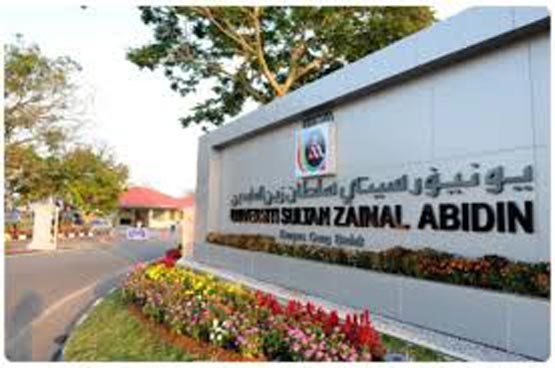



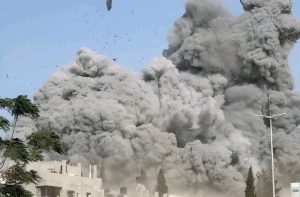



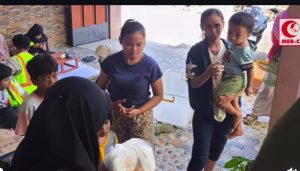

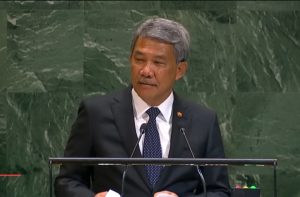

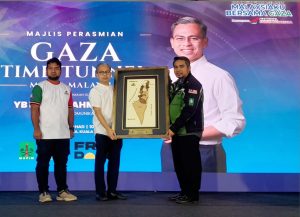








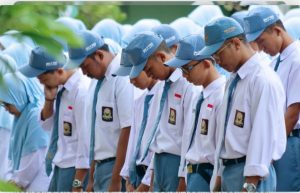







 Mina Indonesia
Mina Indonesia Mina Arabic
Mina Arabic